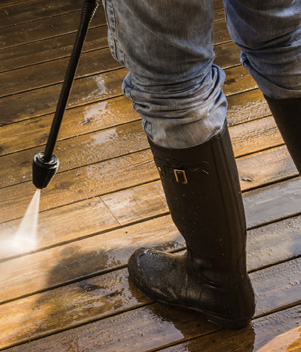Understanding Mildew

Mildew is a lower form of plant life, a fungus that can settle on any surface. Under the right conditions it can colonize. Mildew reproduces and spreads through spores that bury themselves under the surface of wood or sheet rock, there it remains until warm, moist conditions spur its growth. Mildew needs a food source to grow. Among food sources are wood, wood resins, grass, tree pollens, and nutrient-rich dirt. Often mildew is actually growing on dirt or pollen surfaces that have accumulated on wood. Mildew spores thrive when they have food, moisture, air and temperatures between 40° - 90° degrees Fahrenheit.
All exterior building materials are affected by mildew. Even fresh lumber when delivered to the job site can have mildew spores and developing colonies. Patio furniture, concrete sidewalks, and stucco siding are often affected by mildew. Mildew does not affect the strength of wood fibers, but its unsightly appearance detracts from the woods natural beauty. Fungus and mold, like all living organisms, have the ability to adapt in order to survive. Therefore it is a good idea to alternate cleaners periodically for best results.
Mildewcides: Almost all paint and wood finish products contain mildewcides in their formulas. Penofin uses the best possible mildewcides available.
Test for Mildew: If you suspect that you have mildew growth on a surface, test it by washing it with a 50/50 solution of water and household bleach. If there is noticeable lightening of the surface color, mildew is present.
Maintenance and Treatment: The best weapon against mildew on wood is frequent cleaning. Sweep or blow off your deck frequently. Clean your deck periodically with Penofin-Pro-Tech Cleaner Step #2, or a mild soap and water solution. Wet the wood and apply the solution allowing it to work for 15 minutes while agitating with a stiff bristle brush. Rinse well with water and let the surface dry for 24 hours.